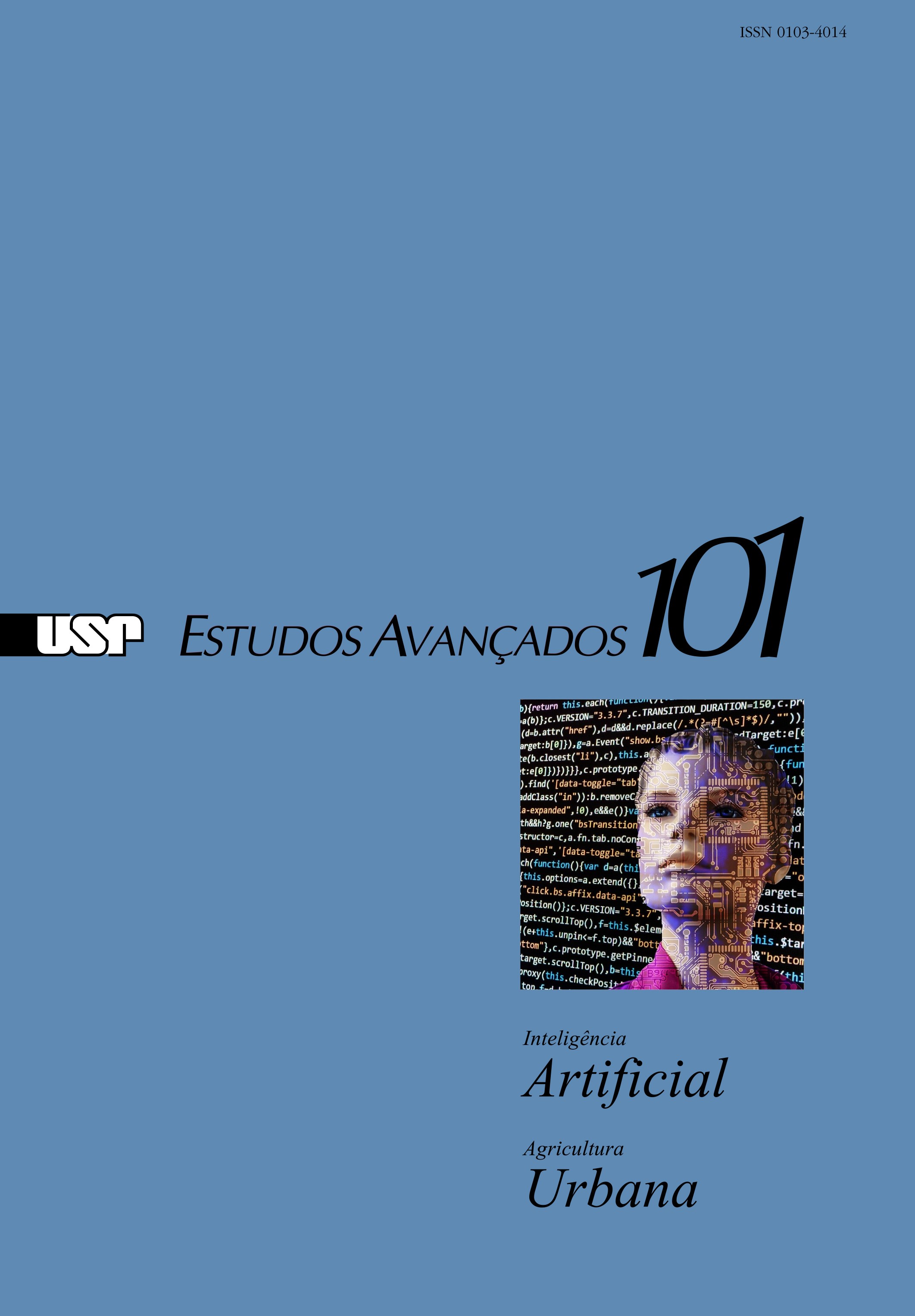No canal da Inteligência Artificial – Nova temporada de desgrenhados e empertigados
DOI:
https://doi.org/10.1590/s0103-4014.2021.35101.002Palavras-chave:
Inteligência Artificial, Lógica, Representação de conhecimento, Aprendizado profundoResumo
O estudo de Inteligência Artificial (IA) tem sido perseguido, desde seu início, segundo dois estilos diferentes, jocosamente referidos como scruffy (desgrenhado) e neat (empertigado). Esses estilos na verdade refletem distintas visões sobre a disciplina e seus objetivos. Neste artigo revisamos a tensão entre desgrenhados e empertigados ao longo da história da IA. Analisamos o impacto do atual desempenho de métodos de aprendizado profundo nesse debate, sugerindo que o desenvolvimento de arquiteturas computacionais amplas é um caminho particularmente promissor para a IA.
Downloads
Referências
ABELSON, R. P. Constraint, construal, and cognitive science. Third Annual Conference of the Cognitive Science Society, p.1-9, 1981.
BERGER, A. L. et al. The Candide system for machine translation. Workshop on Human Language Technology, p.157-62, 1994.
BROOKS, R. Elephants don’t play chess. Robotics and Autonomous Systems, v.6, p.3-15,
CHEESEMAN. P. In defense of probability. International Joint Conference on Artificial Intelligence, p.1002-9, 1985.
DARPA. Explainable Artificial Intelligence (XAI), DARPA-BAA-16-53, 2016.
DAVIS, R. et al. What is a knowledge representation? AI Magazine, v.14, n.1, p.17-33,
DEVLIN, J. et al. BERT: Pre-Training of Deep Bidirectional Transformers for Language
Understanding. arXiV:1810.04805, 2019.
GRAVES, A. et al. Neural Turing Machines, arXiV:1410.5401, 2014.
HALEVY, A. et al. The unreasonable effectiveness of data. IEEE Intelligent Systems, p.8-12, 2009.
HASTIE, T. et al. The Elements of Statistical Learning. Springer, 2009.
HAYES, P. In defence of logic. International Joint Conference on Artificial Intelligence, p.559-65, 1977.
HUDSON, M. IA researchers allege that machine learning is alchemy. Science, 2018.
KRIZHEVSKY, A. et al. ImageNet classification with deep convolutional neural networks. Neural Information Processing Systems, p.1106-14, 2012.
MARCUS, G.; DAVIS, E. Rebooting AI – Building Artificial Intelligence We Can Trust. Pantheon, 2019.
MCCARTHY, J. Programs with common sense. Mechanisation of Thought Processes
(Volume I), p.75-84, 1959.
MCCARTHY, J. Review of “Artificial Intelligence”A General Survey”. Artificial Intelligence,
v.5, n.3, p.371-22, 1974.
MCCARTHY, J. . Generality in artificial intelligence. Communications of the ACM, p.257-67,
MCCORDUCK, P. Machines Who Think. s.l.: CRC Press, 2004.
MINSKY, M. Form and contente in computer science. Journal of the Association for
Computing Machinery, v.17, n.2, p.197-215, 1970.
MINSKY, M. The Society of Mind. s.l.: Simon & Schuster, 1986.
MITCHELL, T. Machine Learning. s. l.: McGraw Hill, 1997.
NEWELL, A. Unified Theories of Cognition. s. l.: Harvard University Press, 1990.
NEWELL, A.; SIMON, H. A. Computer Science as Empirical Enquiry: Symbols and Search. Communications of the ACM, v.19, n.3, p.113-26, 1976.
NILSSON, N. J. Artificial intelligence prepares for 2001. AI Magazine, v.4, p.7-14, 1983.
NILSSON, N. J.. The Quest for Artificial Intelligence. s. l.: Cambridge University Press, 2009.
PEARL, J. Probabilistic Reasoning in Intelligent Systems: Networks of Plausible Inference. s. l.: Morgan Kauffman, 1988.
RICH, E.; KNIGHT, K. Artificial Intelligence. s. l.: McGraw Hill, 1991.
RICH, E. Artificial Intelligence. 3.ed. s. l.: McGraw Hill, 2010.
RUMELHART, D. E.; HINTON, G. E.; WILLIAMS, R. J. Learning representations by back-propagating error. Nature, v.323, n.6088, p.533-536, 1986.
RUSSELL, S.; NORVIG, P. Artificial Intelligence: A Modern Approach. s. l.: Prentice Hall, 1995.
SERGIOVANNI, T. Mystics, neats and scruffies: Informing professional practice in educational administration. Journal of Educational Administration, v.27, n.2, p.7-21, 2007.
SLOMAN, A. Must inteligente systems be scruffy? Evolving Knowledge in Natural Science and Artificial Intelligence, Pitman, 1990.
TAN, M.; QUOC Le. Efficientnet: Rethinking model scaling for convolutional neural networks. International Conference on Machine Learning, p.6105-14, 2019.
WILKS, Y. An Artificial Intelligence Approach to Machine Translation. Tech report AD0741199, Stanford University, 1972.
Publicado
Edição
Seção
Licença
Copyright (c) 2021 Fabio

Este trabalho está licenciado sob uma licença Creative Commons Attribution-NonCommercial 4.0 International License.
Estudos Avançados não celebra contrato de cessão de direitos autorais com seus colaboradores, razão pela qual não detém os direitos autorais dos artigos publicados. Os interessados em reproduzir artigos publicados na revista devem necessariamente obter o consentimento do autor e atribuir devidamente os créditos ao periódico.


